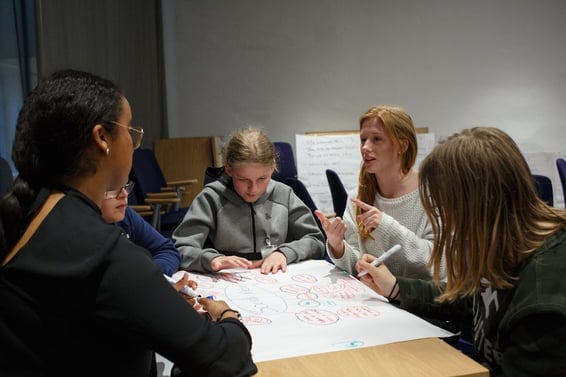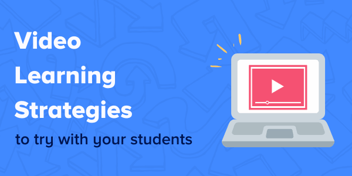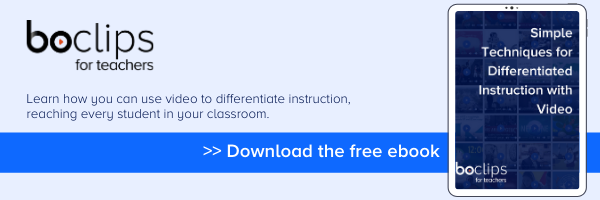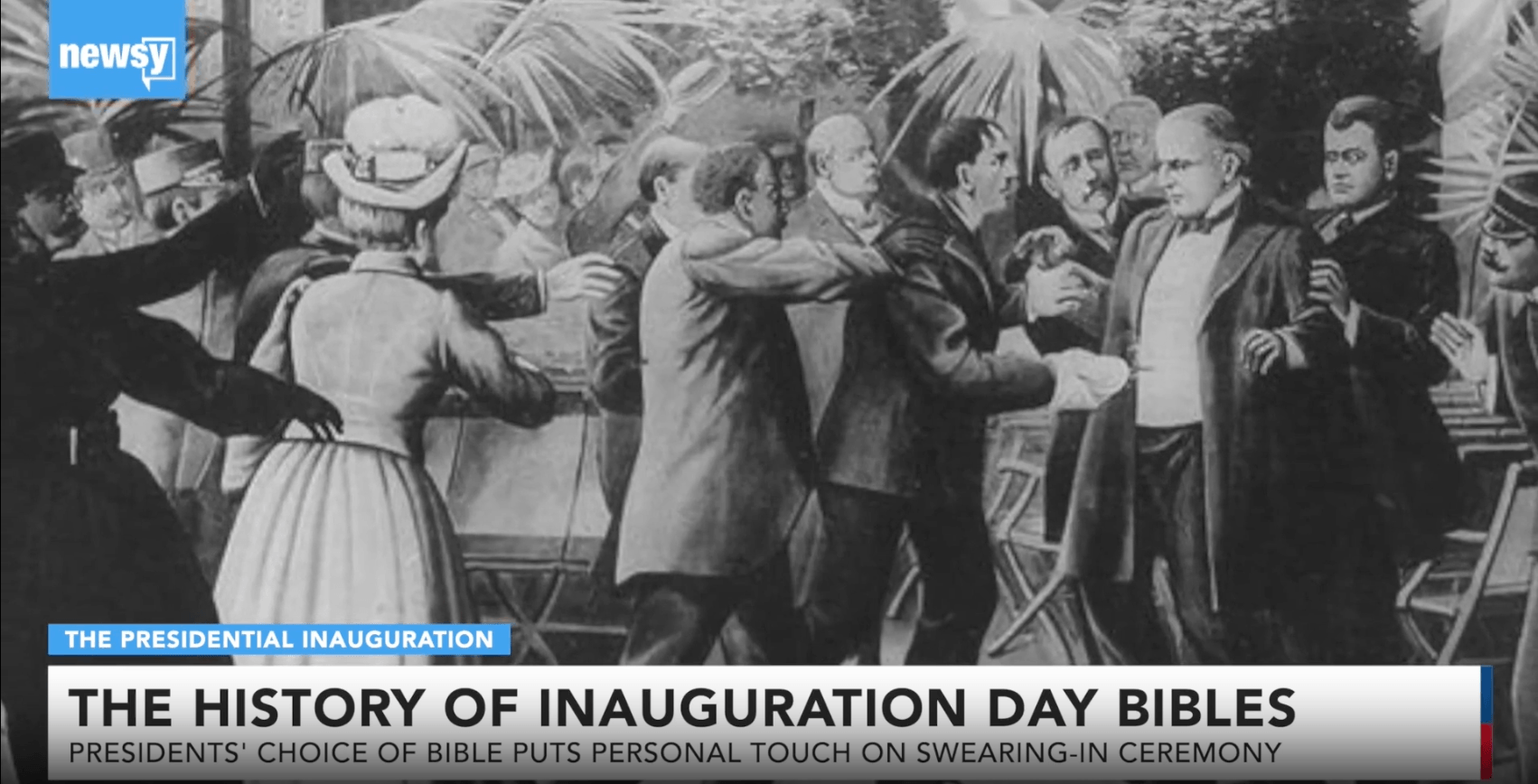Let’s talk about passive and active learning in the context of video-driven lessons. As teachers, every minute in the lesson counts so it’s important that we have both a clear goal and a clear strategy associated with the videos we choose to share with our students. Once we find the right video, we ask ourselves, “Okay, what do I do with this? How can this clip be an active learning experience instead of a passive one for my students?”
In this post, we’ll explore a variety of teaching strategies—five to be exact—for incorporating digital media into your lessons and creating active learning experiences. Of course, every learner, and thus every classroom, is different. As we go through these strategies, I encourage you to think about how you can tinker with them and make them work for you and your class.
The Lottery
Let’s begin with a highly customizable strategy: the Lottery. This simple strategy involves having students watch a video and then complete a randomly assigned task associated with the learning material. This can be used at almost any point during a lesson.
Step 1: Select a video to match your learning objectives and create a few short activities that most students are able to complete independently. These could include: write 3 questions you still have, summarize the video, share 3 things you learned, draw a comic that shows the purpose of the video, create a 5 question quiz on the video etc.
Step 2: Before playing the video, tell students that they should be prepared to complete a random task related to the video.
Step 3: To randomly assign these tasks, students could pull a slip of paper from a box, or each task could be numbered and students could roll a dice to determine which task they should complete.
Step 4: Depending on the length and complexity of the tasks, students can peer assess each other's work, or the teacher can grade the tasks after class.
Lottery activities encourage active viewing as students can't predict how they will be asked to demonstrate their learning. There is also an opportunity for peer to peer learning between students who have completed different tasks.
<< Get more video learning strategies like this in our free downloadable PDF >>

A E I O U
This activity acts as a framework for note-taking that students can reference later on, either for simple recall in a class discussion or in preparing to write an essay or complete a project.
In this activity, students simply watch a video and then take notes based on the following headings:
A - Adjectives
E - Emotions
I - Interest
O - Oohs
U - Ums
This activity is great because it can be scaled from primary learners all the way to senior high school students. So, depending on the grade level you teach, the headings can be adjusted. For example, subject headings that might be more appropriate for a more advanced grade level could be:
A - Analyze
E - Explain
I - Investigate
O - Opinion
U - Understanding
Word Problems
This is very applicable to math, science, and STEM but works with humanities subjects too.
Students could be presented with a video and then write a word problem based on what they’ve seen. For example, students could use clips like this psychology video to write an experiment or test. In the humanities, students could watch a short biopic on the life of Virginia Woolf and create a short essay question for their partner to answer using the information in the video. In social sciences, students could turn a video on the fall of the roman empire into a trivia game to give their peers.
When students know that they’ll be expected to take a piece of content and use it in a flipped classroom, it will encourage them to think laterally, to seek out details in the video that maybe their peers didn’t notice. Students, at the end of the day, love a challenge, and will love to challenge each other.
Scavenger Hunt
Though this strategy requires previewing and planning on your part, it can be very rewarding and versatile for students at any grade level. The concept is simple: you have goals for what students need to look for in the video, and when they find them they must perform some kind of action.
A simple example of this would be using video to drill vocabulary with young learners. Perhaps the terms are mammal, ecosystem, and food chain. When students hear these terms, they can snap, clap, or stand up, or color in part of a worksheet. Another style of this would be a special on wildlife and, based on their understanding of mammals versus amphibians, students could clap for mammals and snap for amphibians.
For older students, this is an opportunity to tweak from the familiar fill-in-the-blank worksheets to listening for specific terms in context, or listening for specific information to help them answer complex questions. Students can write how the word was used in context on their notes or they could write facts they learned on sticky notes and stick them on the board in the classroom under a T-chart or Venn diagram on the whiteboard. If you’re using Google classroom, students can collaboratively share their ideas and responses to key concepts in their scavenger hunt.
Here’s an example. Let’s say your students are watching a few different videos on fascist leaders in world history. In their groups, they could write key concepts on sticky notes like anti-immigrant sentiment, starvation, or empire-building as they learn about them, and place them somewhere in a Venn Diagram. As they continue to learn, they might find some of these notes need to be moved; for example, both the Soviet Union and the Cultural Revolution in China saw periods of starvation. Then students are creating their own visual aid as they compare different regimes.
You could also turn this into Bingo!

Video Learning Journal
Many of you may be using video as supplementary material. For example, if you’re teaching a World War 2 unit you might have students watch short clips once or twice a week that highlight and go in-depth on a specific aspect of WWII. If you have a reading journal, this is the same concept.
Step 1: Have students watch a video and they cannot take notes or write anything.
Step 2: After, they must write or draw for 2-5 minutes. Depending on your class; they can draw pictures, summarize what they learned, or write down questions.
Step 3: Then have students pair-share.
All of these activities can be adapted to suit your classroom’s grade level and are great ways to begin experimenting with video in the classroom. Hungry for more? Download a collection of video learning strategies just like these in PDF format.
Be sure to share these activities with your colleagues and brainstorm with them. Digital media, including video, is constantly changing and evolving and every day becomes even better suited to the needs of educators.
Bree Fabig
Bree has experience in multicultural and multilingual classrooms in the US, Japan, and Nepal and has taught primary, ESL, SAT prep, and secondary language arts.
- #Video in Digital Learning
- #Classroom
- #Educational Videos
- #Video Content Partners
- #Tips for Using Video
- #Boclips for Publishers
- #Issues in Education
- #Educational Videos by Subject Area
- #News and Announcements
- #Events & Holidays
- #Video and Teaching Tools
- #Teaching Methodologies
- #Education Videos
- #Video and Digital Literacy
- #Short Educational Videos
- #Instructional Design
- #Multimodal Learning
- #Video and Student Safety
- #Accessibility in Education
-3.png?width=390&height=223&name=Untitled%20design%20(2)-3.png)


.png?width=1152&height=660&name=Copy%20of%20Untitled%20Design%20(1).png)




